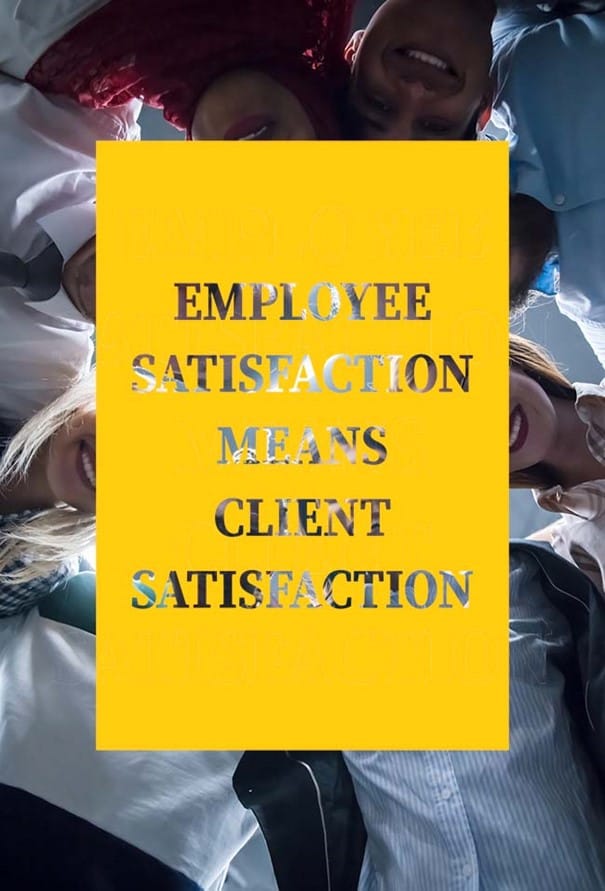The Covid crisis isn’t over yet and new waves of the virus are surging around the world. However, we’ve learned a lot from the crisis over the past two years. Some sectors have been hit hard by the pandemic, particularly customer-facing ones, such as culture, tourism, hospitality… and of course healthcare. These industries have had...
The Covid crisis isn’t over yet and new waves of the virus are surging around the world. However, we’ve learned a lot from the crisis over the past two years.
Some sectors have been hit hard by the pandemic, particularly customer-facing ones, such as culture, tourism, hospitality… and of course healthcare.
These industries have had to adapt quickly to new health restrictions and to deal with the economic fallout of multiple lockdowns, as well as concerns that customers wouldn’t come back.
When customers did finally return to brick-and-mortar stores, branches or any other physical points of contact, businesses had to enforce health protocols, resulting in a worsened customer experience.
There has been a lot of talk about The Great Resignation, as millions of US workers have quit their jobs in the last few months. Companies need to work on their employee experience to fight stress and burnout, but also to simply retain their employees, especially in the industries that have been badly hit by the pandemic.
What’s more, new hybrid customer journeys have emerged, with new customer expectations and higher standards. This puts more pressure on employees, as they have to continuously adapt to these new ways of shopping and buying products and services.
And the crisis isn’t over. The virus is still here, and shortages all over the world are threatening to put a damper on the holiday season, resulting in disgruntled and anxious customers.
So, what have we learned from the crisis? How can customer experience management help employees fight stress and burnout, and improve their employee experience?
1. Sharing the Voice of the Customer and Customer Culture
Transparency is a highly sought-after value today, by both customers and employees. Sharing customer satisfaction results regularly is a good way of showing your employees that you’re committed to transparency, and that their work directly impacts customers.
Showing employees customer reviews helps avoid burnout because they don’t feel like they’re working for nothing. It proves that their efforts to enforce health protocols while maintaining a good customer experience hasn’t gone unnoticed.
By improving the value of their work, you improve your employee experience.
It’s also important to make sure your employees understand the customer culture you want to implement, and why you’re doing it!
Sharing customer culture throughout the whole company has been a key challenge for CX leaders around the world for many years. Implementing a customer process just for the sake of it is counterproductive for employees, especially in difficult times.
Employees need to understand why a specific process is key to the customer experience, and why it’s part of the customer culture. If employees feel that their actions have no meaning, they’ll lack motivation and be more prone to stress.

2. Training employees in Customer Experience processes
Training is key for sharing customer culture. But it’s also essential for employees dealing with customers in times of crisis, whether online, over the phone or in physical outlets.
How should you deal with angry, worried and scared customers? It’s really important to provide employees with support in these kinds of situations.
Why? Firstly, your customers may suffer from a poor customer experience if your employees have not been properly trained to handle any situation.
Secondly, employees dealing with disgruntled customers may end up feeling helpless and stressed, resulting in a poor employee experience.
Training your employees to deal with these kinds of situations will therefore help you prepare for other crises, beyond Covid-19. For example, have you trained your employees to face the shortage crisis that will occur during Black Friday and over Christmas?
Training is key to fight stress and burnout, improve your employee experience and ensure that your employees provide the best possible customer experience.
3. Employee experience and positive feedback
Employee engagement is essential to stop your employees from quitting. This applies to your teams in the field as well as those in offices (or working from home).
People tend to focus on what’s wrong, rather than what’s right! This is true for companies too, where managers don’t always give as much positive feedback as they should.
And it’s also true in terms of the Voice of the Customer!
You tend to hear a lot from unhappy customers, especially since they are more likely to complete satisfaction surveys. But sending employees positive reviews and feedback too is a great way to engage them.
For example, the SKEEPERS CX Management solution offers the possibility of sending positive alerts every time a customer gives the highest rating. In other words, the employee who was in direct contact with the customer, gets an email including the score and a positive customer verbatim.
These positive alerts can start a virtuous cycle for employees and customers and help combat stress and burnout by giving meaning and value to your employees’ daily tasks.
What’s more, this strategy can be used by any company, in any sector… even healthcare!
4. Continuous Customer Satisfaction Monitoring
The Covid crisis has forced companies to adapt quickly, and sometimes radically change the way they do business. For example, stores that never sold products online before, had to set up a Click & Collect service.
How can you make sure that customers are satisfied with these new hastily developed processes and services?
Initially, it’s a question of trial and error, sometimes with no data or feedback whatsoever.
Implementing a continuous and live CX monitoring tool is therefore a great way of making sure that your action plans are generating customer satisfaction. If you have enough data, you can anticipate any problems and fix them as quickly as possible.
Continuous monitoring also means that a bad customer experience day will be compensated by good days in your overall performance review. It’s particularly frustrating if an incident resulting in a bad experience, such as not enough staff on a specific day, happens on the very same day you send out a satisfaction survey.
All of the above will help employees face their daily tasks with a more positive outlook and improve their experience.

5. Employee experience feedback
Collecting regular employee feedback shows that you are listening.
It can provide you with great insight into how they’ve experienced the last few weeks or months, as well as what you can do to make their lives easier.
Remember, it’s important to look after your employees, just like you look after your customers. If your employees are treated well, they’ll make sure to treat your customers well, creating a virtuous cycle, called the symmetry of attention.
However, if you don’t collect feedback and analyze it, you won’t be able to pinpoint which actions will have the most beneficial effect on employee satisfaction.
A CX platform like SKEEPERS CX Management enables you to integrate any kind of feedback, and analyze it to show your strengths and weaknesses, and detect which action plans you need to implement.
What’s more, make sure that you communicate on the actions you’ve taken to improve your employees’ well-being, so that they are known and understood.
Conclusion
The Covid crisis isn’t over yet. However, we’ve learned a lot over the last two years, especially in terms of customer experience and employee experience and engagement.
The Voice of the Customer is an essential tool to monitor and improve customer satisfaction, but it can also be used to improve employees’ mental health, by fighting stress and preventing burnouts.
The Voice of the Customer – and the Voice of Employees! – is the first step to creating a virtuous cycle, making daily tasks more meaningful and helping employees navigate difficult times.
Want to know more about customer experience and employee engagement? Get in touch!







